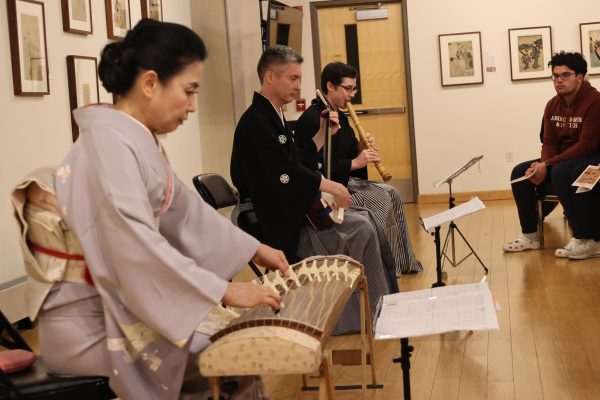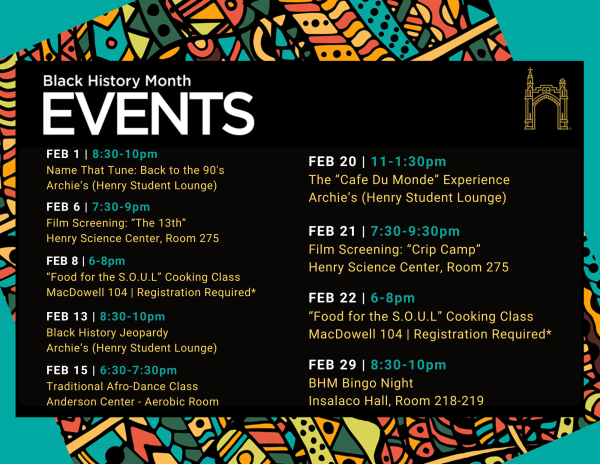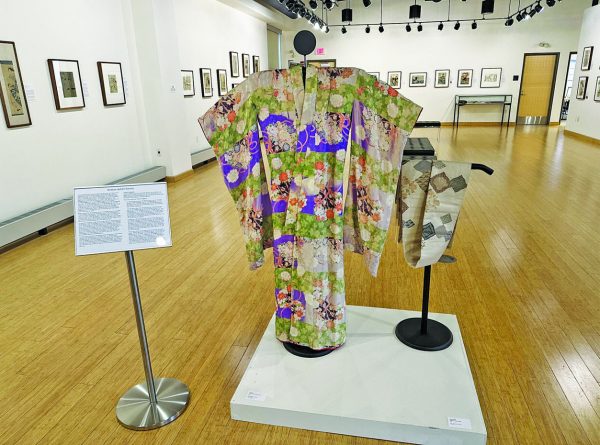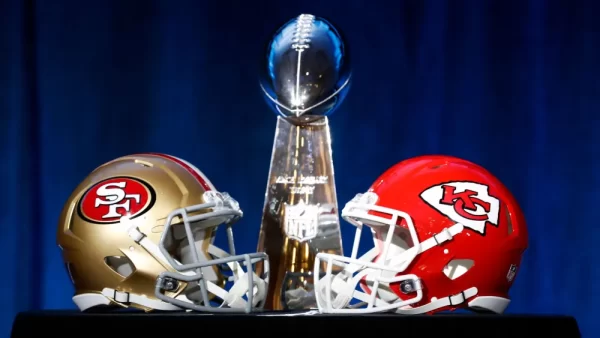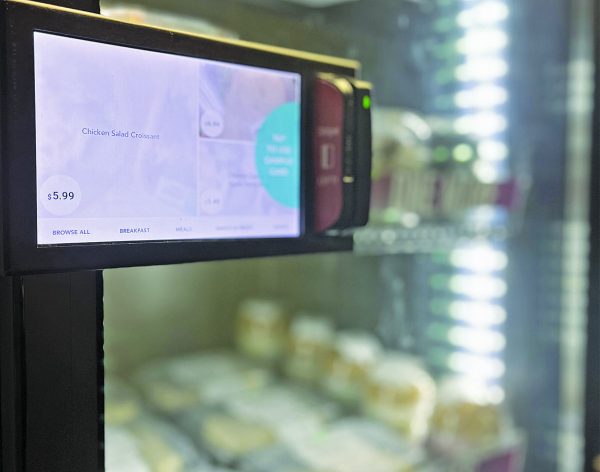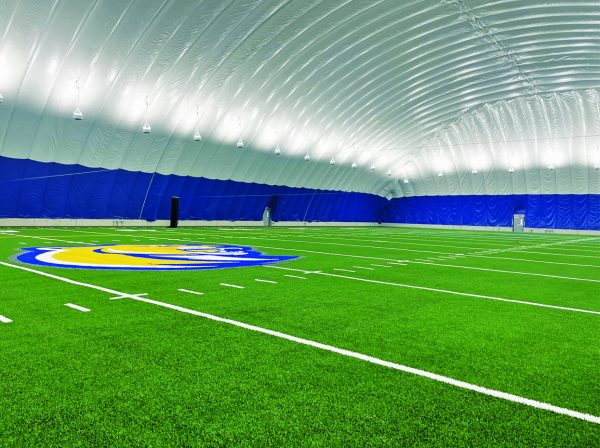Is Internet Radio The Future
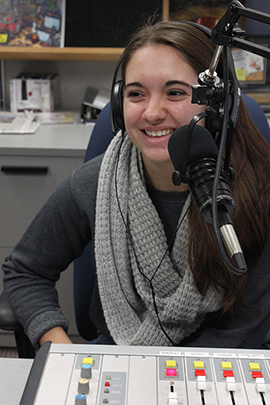
Senior Cougar Radio Music Director Alison Counterman during a radio show.
February 4, 2016
Matthew Scanlon, a junior communications major, hosts “MaNick Mondays” on Cougar Radio every Monday night at 7 p.m. – and he’s never missed a show. One week, he featured a few segments that touched upon popular entertainment topics such as the Star Wars VII movie, Pokemon Go, and World of Warcraft. He wanted more listeners.
But here’s the problem: On any given day, let’s take Monday at noon, students are thumbing their iPhones, reading Facebook for news about the Steelers game and listening to music. They sit at the semi-comfortable sofa near the fireplace in Banks, but they never – or rarely – sign on to Cougarradio.net to catch the tunes. The lack of listenership makes Cougar Radio staffers believe that they need an FM frequency before students will consider the station legitimate.
Scanlon thinks that an FM Frequency would help the station obtain more listeners.
“An FM frequency would change the game,” said Scanlon. “People can listen to the radio in their car. I would want to change my radio show to a morning talk show so people can listen to it on their way to work or school.”
He is not the only one who feels this way.
“I think it would change the experience, because then I would feel like more people would listen,” said Cougar Radio Music Director Alison Counterman. “Being only online, it seems that people have to have more motivation to go online and listen.”
Michael Gombita, a sophomore communications major and Cougar Radio staffer, hopes more people will listen to “Rush Hour,” his show, which airs every Thursday.
“A lot of people do not know the radio station at Misericordia,” said Gombita. “If we had an FM station, I think a lot more students would tune in to Cougar Radio.
According to Dan Kimbrough, Cougar Radio advisor, the communications department decided to attempt to apply for an FM frequency a few years ago. Dr. Joseph Curran, religious studies professor and former Dean of the College of Arts and Sciences, said a committee was formed in 2010 to discuss the possibility of submitting an application.
“There was a license that was going to become available, and we knew that it was going to happen,” said Curran. “The FCC makes licenses available, and they sell them within a certain time frame. We knew that a time frame was going to come up for us to bid on the license, so we decided to talk about it.”
In 2013, the FCC, for the first time in over a decade, opened two low power FM frequencies in the Dallas, Pa. area. Curran said the university could not afford the FM license. He said the school would have had to bring in a lot of equipment and engineers – things for which the university did not have the resources.
“I won’t lie, it hurt,” said Kimbrough. “We had spent years planning for it, looking forward to it, working on it. It would have been a boost.”
While some former students and faculty say they vaguely recall the university having a broadcast station in the late 1980s, the university’s archives contain no records of a broadcast radio station. Jacob Garner, a Misericordia University alumni who was a member of Cougar Radio in early 2000, said the radio station did have some time of frequency that reached only to the parking lot near the Banks center. He said it may have been related to the university’s television channel 10.
“It was kind of like Windows Media Player,” said Garner. “They used to have these little animations that would go along with the music and stuff like that. Nobody ever tuned into the stupid thing.”
Fine arts professor Betty Porzuczek said she remembers Cougar Radio having a frequency from 1987 to 1990.
“The station was run by the students, but it eventually fizzled out due to a lack of student participation,” said Porzuczek.
According to Porzuczek, the signal only reached across campus.
Even without a broadcast frequency, Cougar Radio now reaches across campus and beyond: Cougar Radio is available on the Internet, and Kimbrough said that makes it a very real and legitimate station. The trouble may be that it is ahead of the curve.
“The notion that people disregard Internet [radio] today, I think is a bad idea,” said Kimbrough. “It’s going to be what keeps radio alive. Most cars will soon have Wifi in them. Once that happens, you can go to your radio station’s local website and listen live.”
Students can tune into Cougar Radio by typing in “cougarradio.net” into the search bar and then clicking on the “Listen Now” tab at the top of the screen. According to Google Analytics, the station’s “Listen Now” tab has registered 732 clicks within the first three months of the academic year. The Cougar Radio website averaged 952 visits a month in 2015, and within the past 11 months, cougarradio.net has been visited online 10,474 times.
“The problem that we have is that we have a very small number of students who are willing to help out in radio, and I think it is the perception that radio is dead,” said Kimbrough. “It’s not dead, not by a long shot.”
Kimbrough said as long as artists release new music, radio will not die. He added that Americans listen to radio during their daily commutes, which average 40 minutes.
“That is very small for like LA and New York,” said Kimbrough. “They have a two hour commute. As long as we have morning and afternoon drive time, radio can’t die. You also have it as another medium of getting music out to people.”
Kimbrough was the first person to establish online streaming at Manchester University in 1999. He used this connection to help his college radio station broadcast the basketball and football games.
“We had an old wooden stereo and I spliced wires off the back of it and put it on to a mini jack,” said Kimbrough. “I plugged it into a computer and downloaded real networks.”
Kimbrough said that his college radio station was streaming before it was legal to stream.
“College radio was still something the FCC was trying to get a handle on when we started streaming. There were literally no rules for streaming,” said Kimbrough. “I think by the time I graduated, they had come down with ‘if you did not have a streaming license, you were breaking the law.’ We were streaming before it was legal to stream.”
According to Andrea Jean Baker, a researcher at Monash University in Australia, net-radio was pioneered by Carl Malamud in 1993 when he launched the first community net-only radio station, Internet Talk Radio, in California. In 1994, the University of Kansas started Radio KJHL, the first online radio station to webcast 24 hours a day. Also, according to Baker, ongoing Arbitron/Edison studies reveal Internet radio as a growing trend.
“The world is changing as far as where media is going,” said President Thomas Botzman. “Radio is going to digital delivery through the Internet and it is becoming portable so that you can take it wherever you want.”
Botzman said that if Cougar Radio had an FM frequency, students and faculty who move farther away from campus will not hear the radio station anymore. That is not the case with Internet access, because users can access it almost anywhere.

